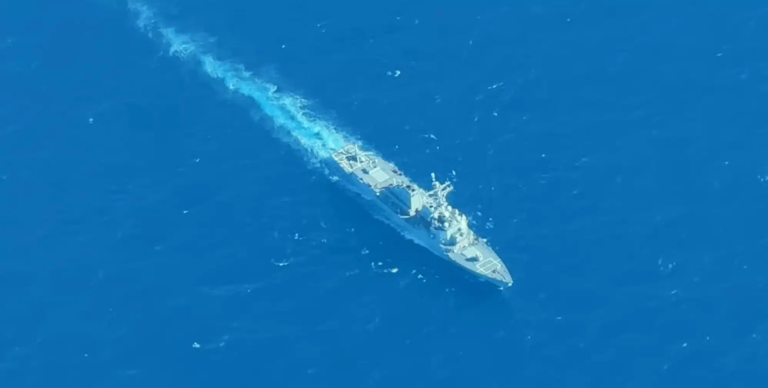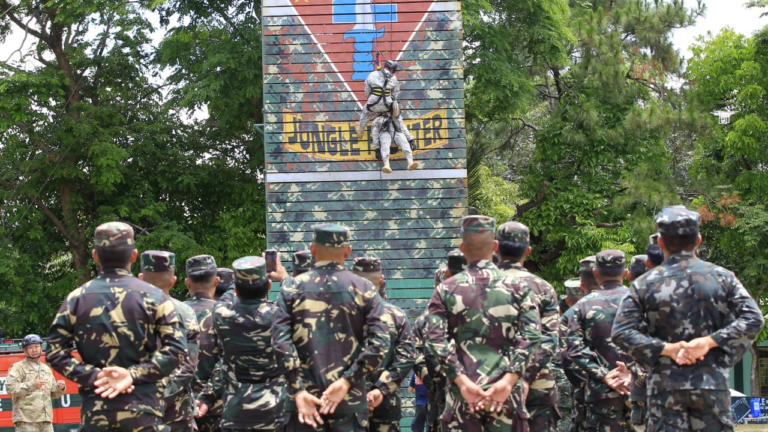
China’s unusually large naval operations around the first island chain are not only intended to demonstrate military power and assert regional control, but also to blur sovereignty boundaries through the normalization of “gray zone” warfare aimed at occupation, a national security official said on Monday.
Since last month, China has been exerting maximum pressure across the region by deploying 50 to 70 naval or government vessels daily across the Yellow Sea, the East China Sea, the South China Sea and the Taiwan Strait, the official said on condition of anonymity.
These operations have been accompanied by provocative air maneuvers involving hundreds of warplanes sent to harass neighboring countries, they added.
Chinese helicopters have breached airspace over the Diaoyutai Islands (釣魚台), known as the Senkaku Islands in Japan, and the air defense identification zone around South Korea’s Ieodo Island, while Chinese vessels have entered the territorial waters of multiple nations, the official said.
“Gray zone” intrusions continued, while regular combat readiness patrols and military drills were conducted from May 1 to Tuesday last week, they said.
On May 11, Beijing released a white paper titled China’s National Security in the New Era, which emphasized state power, “national unification” and territorial integrity as core national interests, the official said.
Following the announcement, a series of coordinated military maneuvers involving Chinese warplanes, anti-submarine aircraft and uncrewed aerial vehicles were launched to pressure Taiwan, particularly on May 11, May 18 and Friday last week, the official added.
On May 16, the Chinese People’s Liberation Army’s (PLA) Eastern Theater Command crossed the Miyako Strait to conduct long-distance air and naval drills, they said.
On May 20, the PLA’s 73rd Group Army carried out an amphibious landing exercise in waters southeast of China’s Fujian Province, they said.
Meanwhile, the aircraft carrier Liaoning led a naval formation through the Miyako Strait into the East China Sea on May 25 and Monday last week, during which the PLA Air Force conducted its first carrier-based takeoff and landing operations in that sea, they added.
Separately, another aircraft carrier, the Fujian, completed its eighth sea trial earlier last month, they said.
The 73rd Group Army of the PLA Army Ground Force conducted an amphibious landing exercise in waters southeast of China’s Fujian Province on May 20, the official said.
In addition to its expanded military drills, China has also ramped up “gray zone” incursions over the past month, the said.
While China Coast Guard vessels have continued to intrude into territorial waters surrounding Taiwan proper and its outlying islands, more than 40 unauthorized fishing vessels on May 19 entered waters southwest of Penghu County, despite China’s fishing moratorium being in effect, they added.
These incursions were not only disruptive to Taiwan’s maritime security, but are also suspected to be part of a broader “gray zone” strategy — using civilian fishers to obscure the presence of China Coast Guard vessels and justify their law enforcement operations, they said.
Similar tactics might have been behind incidents on May 15, 16, 20 and 23, when Chinese illegally entered Taiwan by rubber boat or swimming, with the likely goal of probing Taiwan’s coastal defense capacity, they added.
Given that crossing the Taiwan Strait by rubber boat or swimming is not reasonably feasible, they were likely transported by a larger vessel to a location closer to Taiwan before making the final leg of the journey, the official said.
Through the combined use of coast guard vessels, illegal fishing boats and clandestine operations, China appears to be conducting hybrid harassment tactics to reshape the regional security situation, they said.
China also seems intent on demonstrating its absolute control over the entire first island chain and showcasing its capabilities for anti-access and area denial operations, they added.
However, the ultimate goal might be to undermine international norms by intensifying “legal warfare” against neighboring countries — normalizing military drills across East Asia to erode established rules, the source said.
By manufacturing the appearance of “long-standing” law enforcement activity in the region, China could be attempting to blur international recognition of sovereign boundaries in favor of its disputed territorial claims, they added.





